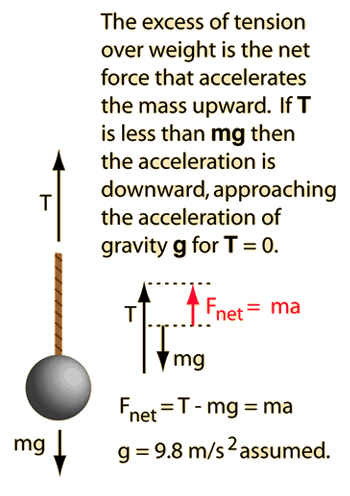Lifting Mass
Though a straightforward application of Newton's second law, many find this problem deceptive. The common misconception which is carried into it is that the tension in the rope must equal the weight of the hanging object. When the mass is accelerated, that is not so. You may change the data and then click on either tension or acceleration in the equation below to calculate its value.
mass x acceleration = tension - weight
 |
See elevator problem |
Newton's laws
Standard mechanics problems
| HyperPhysics***** Mechanics | R Nave |